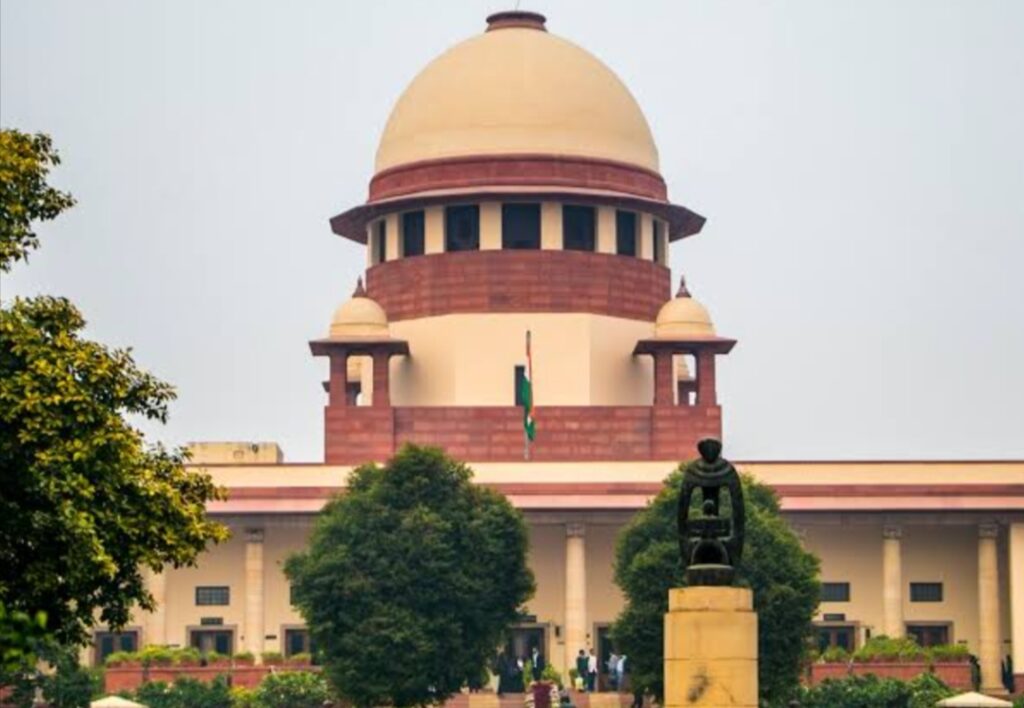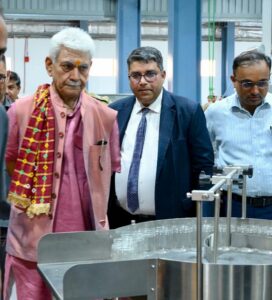Supreme Court Judges to Declare Assets Publicly: A Push for Transparency Amid Controversy
Samba Times Special

New Delhi, April 4, 2025 – In a landmark move aimed at bolstering public trust in India’s judiciary, all 33 sitting judges of the Supreme Court, led by Chief Justice of India (CJI) Sanjiv Khanna, have unanimously agreed to make their asset declarations publicly available. The decision, finalized during a full-court meeting on April 1, 2025, marks a significant departure from decades of judicial practice where such disclosures were either voluntary or confined to internal submission to the CJI. The declarations will soon be uploaded to the Supreme Court’s official website, though the modalities and timeline are still being worked out.
This step, hailed as a stride toward transparency, comes at a time when the judiciary’s image has been under scrutiny, most notably due to
a recent controversy involving allegations of burnt cash found at the residence of a high court judge.
But what prompted the CJI to spearhead this decision, and does it signal deeper concerns about the judiciary’s credibility?
The Decision: A Shift from Tradition
Historically, the Supreme Court has maintained a cautious stance on public disclosure of judges’ assets. A 1997 resolution, known as “The Restatement of Values of Judicial Life,” mandated that every Supreme Court judge declare their assets—covering real estate, investments, and those of their spouses and dependents—to the CJI upon assuming office and annually thereafter.
High court judges followed a similar protocol, submitting details to their respective chief justices. However, public disclosure remained optional. In 2009, amid growing public pressure, the court allowed voluntary publication of these declarations on its website, but uptake was inconsistent, and the practice lapsed after 2018, with privacy concerns often cited as the reason.
The April 1 decision changes this. Sources indicate that CJI Khanna proposed the idea during the full-court meeting, addressing reservations from some judges to secure unanimous support.
The shift from voluntary to mandatory public disclosure reflects a recognition that internal accountability mechanisms alone may no longer suffice in an era of heightened public scrutiny.
But the timing of this move—coming weeks after a high-profile incident involving a judge—suggests it is more than a routine reform.
The Trigger: The Justice Yashwant Varma Controversy
The immediate backdrop to this decision might be the troubling incident that unfolded on March 14, 2025, at the official residence of Delhi High Court judge Justice Yashwant Varma. During a fire at his bungalow, Delhi Fire Services personnel reportedly discovered partially burnt wads of cash in the storeroom of the outhouse. Justice Varma, who was not present at the time, has vehemently denied any connection to the money, stating that neither he nor his family kept cash in the storeroom. The incident, which surfaced publicly a week later, sparked a media firestorm and raised questions about judicial integrity.
The Supreme Court quickly distanced itself from linking Varma’s subsequent transfer to the Allahabad High Court to the cash controversy, clarifying that the collegium’s decision predated the incident. However, the CJI constituted a three-member in-house committee, led by Delhi High Court Chief Justice D.K. Upadhyaya, to probe the allegations. The committee’s findings, made public last month, remain inconclusive, with conflicting reports from the Delhi Fire Services—initially denying the cash discovery, only for its chief, Atul Garg, to later clarify he had not ruled it out.
The ambiguity fueled speculation and eroded public confidence, with critics questioning whether the judiciary was shielding its own.This episode was not an isolated blemish.
Over the years, allegations of impropriety—ranging from unexplained wealth to favoritism in judicial appointments—have periodically cast a shadow over India’s higher judiciary.
The Varma incident, with its dramatic imagery of burning notes, became a lightning rod for long-simmering demands for accountability, amplifying calls from activists, parliamentarians, and even former judges for mandatory asset disclosure.
Why the CJI Acted: Restoring Trust and Preempting Pressure
CJI Sanjiv Khanna’s decision to push for public asset declarations can be seen as both a proactive and defensive maneuver. First, it addresses a growing trust deficit. The judiciary, often revered as the last bastion of justice in India, has faced criticism for opacity in its functioning—be it the secretive collegium system for appointments or the reluctance to open financial details to public scrutiny. Unlike elected officials, who must declare assets during elections, or bureaucrats, whose declarations are accessible via the Right to Information (RTI) Act, judges have enjoyed a unique exemption. This disparity has fed perceptions of an unaccountable elite, a narrative the CJI likely sought to counter.
Second, the move preempts external pressure.
In 2023, a Parliamentary Standing Committee recommended legislation to mandate asset declarations for Supreme Court and High Court judges,
a proposal that gained traction after the Varma incident. By acting internally, the judiciary retains control over the process, avoiding a potential legislative overreach that could encroach on its independence.
Legal experts note that CJI Khanna, known for his reformist bent, may have seen this as a way to signal self-regulation, reinforcing the judiciary’s moral authority at a critical juncture.Finally, the decision reflects an acknowledgment of the digital age’s realities.
Social media amplified the Varma controversy, with posts on X and other platforms decrying judicial privilege and demanding transparency. In a full-court meeting held just days after such sentiments peaked, the CJI likely recognized that silence or half-measures would only deepen public cynicism.
Clout on the Judiciary’s Image: A Double-Edged Sword
Does this decision indicate a tarnished judicial image? Not necessarily, but it does reveal vulnerability. The Varma incident, while unproven, fits a pattern of controversies that have chipped away at the judiciary’s once-unassailable reputation.
From the 2009 cash-at-judge’s-door scandal in Punjab to allegations of corruption in medical college cases in 2017,
such episodes have left lingering doubts.
A 2019 RTI ruling by the Supreme Court itself—that judges’ assets are not “personal information”
—emphasizes the public’s right to know, yet the court’s failure to act on it until now highlighted a disconnect between principle and practice. Public asset declarations could restore faith by showcasing accountability.
Former Law Minister Ashwani Kumar called it a “symbolic gesture” that meets “high standards of probity,”
a view echoed by many who see it as a step toward aligning the judiciary with democratic norms. Yet, it’s a double-edged sword. If declarations reveal significant wealth disparities or questionable acquisitions, they could invite further scrutiny, potentially undermining the very trust this move aims to rebuild. Moreover, the voluntary nature of the website upload—despite the mandatory submission to the CJI—leaves room for skepticism about full compliance.
Looking Ahead: A New Era or a Temporary Fix?
As the Supreme Court finalizes the logistics—possibly aligning declarations with income tax filings by July 31, 2025—this decision marks a turning point. It challenges the judiciary to live up to its own rhetoric of transparency, a test that will play out in the public eye. For CJI Khanna, it’s a legacy-defining moment, balancing judicial independence with accountability in a way his predecessors often avoided.
The alleged burning notes at Justice Varma’s residence may fade from headlines, but their embers have ignited a broader reckoning.
Whether this reform heals the judiciary’s image or exposes new fault lines depends on its execution—and the willingness of judges to embrace, not just endure, the spotlight. For now, India watches as its highest court steps out from behind the veil & trying to repose the same faith which was always accorded to it from the times immemorial.
When all doors close, the temple of Justice opens
Rahul Sambyal ✍️
Executive Editor
Samba Times





